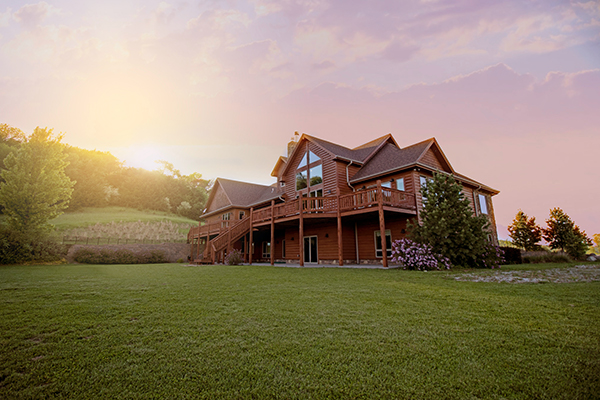Are you a first-time home buyer? Purchasing a vacation home? Learning about investment or rental properties? The type of loan that you’ll need will heavily depend on your unique financial situation and the reason for the purchase. Not all first-time home buyers have to gravitate toward an FHA loan. And not all second-time home buyers have to use a conventional loan.
A mortgage loan is essentially a long-term contract between you and the bank. Because you’ll be paying on that loan for many years to come, you will want to carefully select the terms, rates and agreements therein.
In this blog, we’ll examine each loan type and highlight the main components of each. All you’ll have to do is decide which type is right for you, based on the details that match your financial situation. And if you are uncertain, an experienced mortgage professional can always help. Let’s get started!
Government Loan vs Conventional Loan
The government does not loan out money for mortgages. Instead, it provides special programs designed to help first-time homebuyers, those with low to moderate credit scores, and active military members or veterans qualify for a mortgage.
You’ll still work with a trusted lender when you seek a government backed loan, and will make your loan payments to that lender, not the government.
The largest difference between a government loan and a conventional loan is the qualification requirements and the loan terms.
While you might get lower interest rates as part of a government loan, be sure to ask your lender about additional fees involved in a government loan program. Sometimes, it’s better to go with a conventional loan with a higher interest rate but no additional fees, if you can qualify for it. There is also something called PMI (Private Mortgage Insurance) that can differ between the loan types.
FHA – Federal Housing Administration
You’ll hear often that the FHA loan is great for first-time home buyers. Truth is, this loan type may not be the best option depending on your financial situation.
Some of the benefits of an FHA loan are: low, fixed monthly payments – the interest rates are typically lower than that of conventional loans. Furthermore, this loan only requires a 3.5% down payment.
One drawback to an FHA loan is that all borrowers pay an upfront mortgage insurance fee, as well as a monthly mortgage insurance premium. This is insurance that protects the lender in case you should default on the loan during the loan term.
Generally, buyers turn to an FHA loan when they can’t qualify for a conventional loan, or cannot afford to put down a larger down payment, such as 10 or 20 percent. As you evaluate FHA loans, here are some things to think about.
- Have you applied for a conventional loan and been denied?
- Are you comfortable paying the additional mortgage insurance premium?
- Are you aware that the mortgage insurance on an FHA loan is usually “for life”?
- Do you have enough money saved or gifted to cover at least 3.5% of the purchase price?
USDA – US Department of Agriculture
The USDA loan is also a government insured loan, but the requirements are a bit different than the FHA loan. This loan provides financing for 100% of the home purchase price, so there is no down payment associated with this loan type. However, you’ll still need to be prepared to cover closing costs if the seller is not.
To get a USDA loan, you must typically have a 640 credit score or higher. This minimum score can vary though from lender to lender. But with this loan, the lower the score is, the more difficult it may be to obtain an approval. These loans are specifically designed to help low to moderate income buyers in rural or semi-rural areas. The list of qualifications for both the buyer and the location of the home you’re purchasing can be quite specific. So it takes just the right combination of buyer and home to qualify for this loan type.
Key considerations for a USDA loan are:
- Do you have a combined household income of $90,300 or less for a 1 to 4 person household or $119,200 or less for a 5 person or more household?
- Does the home meet the rural qualifications outlined by the USDA loan requirement – is it showing up on the USDA approved map?
- Is your credit score generally 640 or higher?
VA – Veterans Administration
The VA loan is specific to most active and reserve military veterans. If you are no longer in the military and have been honorably discharged, you may still qualify for a VA loan.
VA loans can provide up to 100% financing for the full cost of the home and do not require the homeowner pay monthly PMI or mortgage insurance. These loans also cap certain closing costs that the veteran can pay, making them generally lower in closing fees than other loans.
One small drawback to a VA loan is that you do often have to pay the “VA Funding Fee”. This fee varies based on whether you have used the VA loan before and other factors. The fee is a percentage of the loan amount and is designed to offset expenses to taxpayers for you to receive this special loan type. The fee is added to your total loan though and will not have to be paid at the closing table. Additionally, if you are disabled you may not incur the funding fee at all. But do discuss this fee with your experienced loan officer to find out how much your particular fee can be.
Key considerations for a VA loan include:
- Are you an active military member or a veteran seeking a low to no down payment loan with more competitive rates and terms for your mortgage loan?
- Are you unable to put a down payment on your home purchase?
- Does the total cost of the loan, including the funding fee, have better terms than a conventional loan?
Conventional Mortgage Loans
Conventional loans, as mentioned above, are not backed by the government. They’re backed by private entities. This loan type is a good option for you if you have good credit, steady income and strong employment history. You must be able to pay a minimum 3 to 5 percent down payment to qualify for a conventional loan.
However, if you pay less than 20 percent down, you will need to pay private mortgage insurance (PMI) each month as part of your mortgage payment. This will increase the amount of your total monthly mortgage payment. The PMI does go away however, once you have reached the required equity in the home. Discuss this feature with your mortgage professional.
Conventional loans generally have terms ranging from 10 to 30 years. The shorter the loan term, the lower the rate can be. But this type of loan and the associated interest rate is heavily weighted by your qualifying credit score. The better the score, the better the interest rate you can get.
Key considerations for seeking a conventional loan include:
- Can you put at least 3 percent of the home cost down at closing?
- Do you have good credit, steady employment and income, and a stable employment history over at least the last 2 years (this can include schooling)?
- Are you comfortable paying the additional private mortgage insurance (PMI) in your monthly payment if you put less than 20 percent down
Working with a Mortgage Partner
If all those numbers and considerations have your head spinning, it’s time to talk to an expert. It’s good to join mortgage conversations informed, but it’s also good to have a mortgage professional looking out for your best interests.
At Upstate Mortgage, we will discuss your financial situation with you, learn more about the home you’re seeking, and make mortgage recommendations based on your circumstances. We’ll also provide you all the details you need to make a good financial decision for your future.
Contact us to get started with a loan partner you can trust. Serving South Carolina since 1993!



